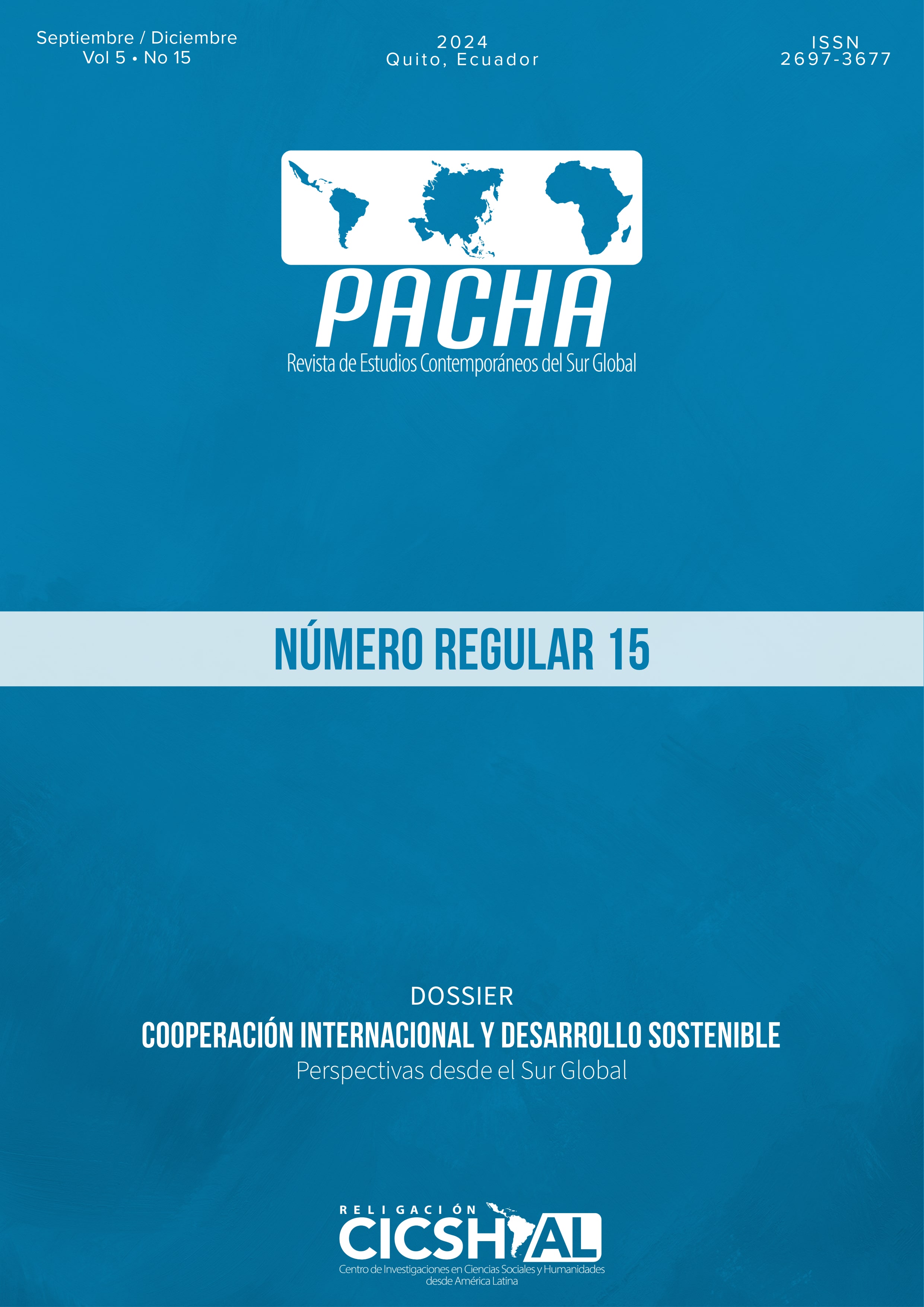Abstract
Co-production facilitates obtaining financing and distributing the film product in different countries. However, in cultural terms, it benefits the hegemonic countries, since they can control the films that are made in certain regions such as Latin America. International Film Festivals are showcases in which films will enjoy cultural prestige when exhibited, although in order to be selected they must align with the taste of the festivals and stay away from social themes. This article examines the Latin American productions exhibited in four Class A Festivals based on a quantitative content analysis of the official selection from 2015 to 2024. As a result, it was found that Latin American participation is limited. Most of the films were co-productions (67.12%), France was the nation that co-produced the most and Argentina was the country that registered the most films (54.79%). The Ibermedia programme was involved in 23.28% of the productions, and most of them were not co-produced with Spain. It is concluded that co-production with European countries continues to be key for Latin American filmographies to access the prestige offered by A-class Film Festivals.
References
Alesina L., Bertoni, M., Mascheroni, P., Moreira, N., Picasso, F., Ramírez, J. y Rojo, V. (2020). La definición de objetivos y su relación con el diseño de investigación en K. Batthyány, y M. Cabrera, (eds.). Metodología de la investigación en Ciencias Sociales. Apuntes para un curso inicial (pp. 33-37). Universidad de la República Uruguay.
Amiot-Guillouet, J. y Lozano Aguilar, A. (2019). Dinámicas transnacionales de producción y difusión del cine entre América Latina y Europa: el papel de los festivales. Archivos de la Filmoteca, (77), 13-20.
Barredo Ibáñez, D. (2015). El análisis de contenido. Una introducción a la cuantificación de la realidad. Revista San Gregorio, 26-31. https://doi.org/10.36097/rsan.v0i0.113
Campos, M. (2015). Film (Co)Production in Latin America and European Festivals. The cases of production companies Fabula & Control Z. Zeitschrift für Kulturmanagement, 1(1), 95-108. https://doi.org/10.14361/zkmm-2015-0107
Crusafon, C. (2018). The Ibermedia Programme: How Supra-National Policy Developed the Ibero-American Space. En N. Mingant, y C. Tirtaine, (eds.). Reconceptualising Film Policies (pp. 143-156). Routledge.
Da Silva, H. C. (2019). La coproducción internacional como ampliación de horizontes para la cinematografía brasileña contemporánea. La importancia de los festivales y muestras cinematográficas. Archivos de la Filmoteca, (77), 93-110.
De Valck. M. (2016). Fostering art, adding value, cultivating taste: film festivals as sites of cultural legitimization en Kredell, Brendan, et al. (eds.). Film Festivals: History, Theory, Method, Practice (pp. 100-116). Routledge.
Falicov, T. L. (2017). Film Funding Opportunities for Latin American Filmmakers. En M. M. Delgado, S. M. Hart, y R. Johnson, (eds.). A Case for Further North–South Collaboration in Training and Film Festival Initiatives (pp. 85-98). Wiley. https://doi.org/10.1002/9781118557556.ch5
Feenstra, P. (2019). Una veduta europea del cine de festivales: “el horizonte” del paisaje en el cine argentino. Archivos de la Filmoteca, (77), 47-58.
Fernandes, M. R. (2022). The end of an era? The decrease of the EU influence in Ibero-American digital media policy discourses. International Journal of Cultural Policy, 29(7), 876–893. https://doi.org/10.1080/10286632.2022.2147517
Fernandes, M. R., Donders, K., y Loisen, J. (2022). Ibermedia as a collaborative space for film co-production policy? A stakeholder analysis on decision-making processes. Communication & Society, 35(2), 137-153. https://doi.org/10.15581/003.35.2.137-153
FIAPF. (s.f.). Accredited Festivals. FIAPF Film Producers Worldwide. https://fiapf.org/festivals/accredited-festivals/competitive-feature-film-festivals/
Film Festival Research. (2024, 2 de febrero). 6.5 Latin America. https://lc.cx/4mD3XV
Frías, L.G. y Marañón, F. (2022). Diversidad cultural, coproducciones y tendencias fílmicas en tres festivales europeos de cine clase. En A en B. A., Muñoz, A., Corona, y G. Pérez Salazar, (coords.). Producción y consumo de contenidos audiovisuales. Abordajes desde la Comunicación Social (pp. 15-50). Universidad Autónoma de Coahuila, AMIC.
Hernández Sampieri, R., Fernández Collado, C., y Baptista Lucio, M. D. P. (2010). Metodología de la investigación. McGrawHill.
Ibermedia. (s.f.). Nuestros proyectos. Programa Ibermedia. https://www.programaibermedia.com/proyectos/#todo
IDFA Professionals. (s.f.). About the IDFA Bertha Fund. https://lc.cx/_i4xG7
IMDB. (s.f.). Internet Movie Data Base. https://www.imdb.com/
Hessenfilm. (s.f.). About. Hessen Film & Medien. https://www.hessenfilm.de/en/about
Lema Mosca, A. (2019). El (nuevo) cine en Uruguay: la coproducción. Archivos de la Filmoteca, (77), 111-124.
Loist, S. (2016). The film festival circuit: networks, hierarchies, and circulation. En Kredell, (eds.). Film Festivals: History, Theory, Method, Practice (pp. 49-64). Routledge.
Macarro Fernández, J. (2019). La Villa del Cine y su impacto en la industria cinematográfica venezolana. Archivos de la Filmoteca, (77), 125-140.
Mar del Plata Film Fest. (s.f.). Historia 39º Festival Internacional de Cine de Mar del Plata – del 21 de noviembre al 1 de diciembre de 2024. https://www.mardelplatafilmfest.com/39/es/historia
McClennen, S.A. (2018). Globalization and Latin American Cinema. Toward a New Critical Paradigm. Palgrave Studies in Globalization, Culture and Society.
Montero, L. (2019). Hacer películas chilenas desde Francia: Marcela Said y Jairo Boisier. Archivos de la Filmoteca, (77), 79-92.
MUBI. (s.f.) Visión. https://mubi.com/es/vision
Narváez, G. W. (2019). El cine latinoamericano y la estética de festival. Archivos de la Filmoteca, (77), 21-46.
Paszkiewicz, K. (2012). Del cine épico al cine social: el universo metafílmico en También la lluvia Lectora, 18, 227-240. https://doi.org/10.2436/20.8020.01.47
Rueda, A. (2019). Nuevas condiciones de la internacionalización de los cines de América Latina y plataformas profesionales de festivales. El caso de Cine en Construcción. Archivos de la Filmoteca, (77), 59-78.
Talipot. (s.f). Quiénes somos. https://talipot.studio/quienes-somos/
Thibaudeau, P. (2007). ¿Hacia un nuevo realismo social en el cine español? En J. C. Seguin, y N. Berthier, (coords.). Cine, Nación(es) y nacioalniades(es) en España (pp. 233-248). Casa de Velazquez.
Somospiano. (s.f.) Sobre nosotros. https://www.somospiano.com/nosotros
Stringer, J. (2016). Film festivals in Asia: notes on history, geography, and power from a distance. En Kredell, (ed.). Film Festivals: History, Theory, Method, Practice (pp. 34-48). Routledge.
Swart, S. (2000, 28 de agosto). There’s no such thing as an ‘A’ fest, accreditors say. Variety. https://lc.cx/9rhmNA
Villazana, L. (2008). Hegemony conditions in the coproduction cinema of Latin America: The role of Spain. Framework: The Journal of Cinema and Media, 49(2), 65-85.
Wong, C. H.Y. (2011). Film Festivals. Culture, People, and Power on the Global Screen. Rutgers University Press.

This work is licensed under a Creative Commons Attribution-NonCommercial-NoDerivatives 4.0 International License.
Copyright (c) 2024 Luis Gerardo Frías




